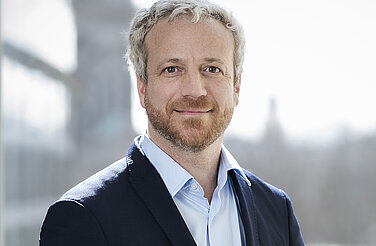-
Wind and solar PV drive power system development.
As part of Europe’s renewable energy expansion plans, the PLEF countries will strive to draw 32 to 34 percent of their electricity from wind and solar by 2030. The weather dependency of these technologies impacts power systems, making increased system flexibility crucial.
-
Regional European power system integration mitigates flexibility needs from increasing shares of wind and solar.
Different weather patterns across Europe will decorrelate single power generation peaks, yielding geographical smoothing effects. Wind and solar output is generally much less volatile at an aggregated level and extremely high and low values disappear. For example, in France the maximum hourly ramp resulting from wind fluctuation in 2030 is 21 percent of installed wind capacity, while the Europe-wide maximum is only at 10 percent of installed capacity.
-
Cross-border exchange minimises surplus renewables generation.
When no trading options exist, hours with high domestic wind and solar generation require that generation from renewables be stored or curtailed in part. With market integration, decorrelated production peaks across countries enable exports to regions where the load is not covered. By contrast, a hypothetical national autarchy case has storage or curtailment requirements that are ten times as high.
-
Conventional power plants need to be flexible partners of wind and solar output.
A more flexible power system is required for the transition to a low-carbon system. Challenging situations are manifold, comprising the ability to react over shorter and longer periods. To handle these challenges, the structure of the conventional power plant park and the way power plants operate will need to change. Renewables, conventional generation, grids, the demand side and storage technologies must all become more responsive to provide flexibility.
The European power system in 2030: flexibility challenges and integration benefits
An analysis with a focus on the Pentalateral Energy Forum region

Preface
As part of its strategy to become a low-carbon region, the European Union aims to draw at least 27 percent of its energy from renewables by 2030. This translates into a share of some 50 percent in the power sector. Solar photovoltaics and wind power – driven by significant cost reductions – will almost certainly contribute to more than half of this share.
As wind and solar depend on weather, future power systems will be characterised by fundamentally different generation patterns to those observed today, significantly increasing the
need for flexibility and back-up capacity. In meeting the flexibility challenge, regional cooperation and power system integration offer important ways forward. Indeed, several regional power market initiatives exist throughout Europe that “live” cooperation on a daily basis. One of these initiatives is the Pentalateral Energy Forum (PLEF), a set of seven countries in Central Western Europe – Austria, Belgium, France, Germany, Luxembourg, the Netherlands and Switzerland – that already have a track record of regional cooperation, coupled wholesale markets and a relatively high level of physical interconnection.
Against this background, we commissioned experts from Fraunhofer IWES to look deeper into the future of regional market integration for power systems with high shares of wind and solar: What kinds of flexibility requirements arise from the projected growth of these two technologies? And
to what extent can further power market integration within and beyond PLEF countries help meet the challenge?
Key findings
Bibliographical data
Downloads
-
Analysis
pdf 10 MB
The European Power System in 2030: Flexibility Challenges and Integration Benefits
An analysis with a focus on the Pentalateral Energy Forum region.
-
Data Attachment
xlsx 2 MB
Power system simulations 2030 in the Penta-region
Data on installed renewable capacities, hourly load and hourly residual load values for the countries of the Pentalateral Energy Forum region for 2030.







